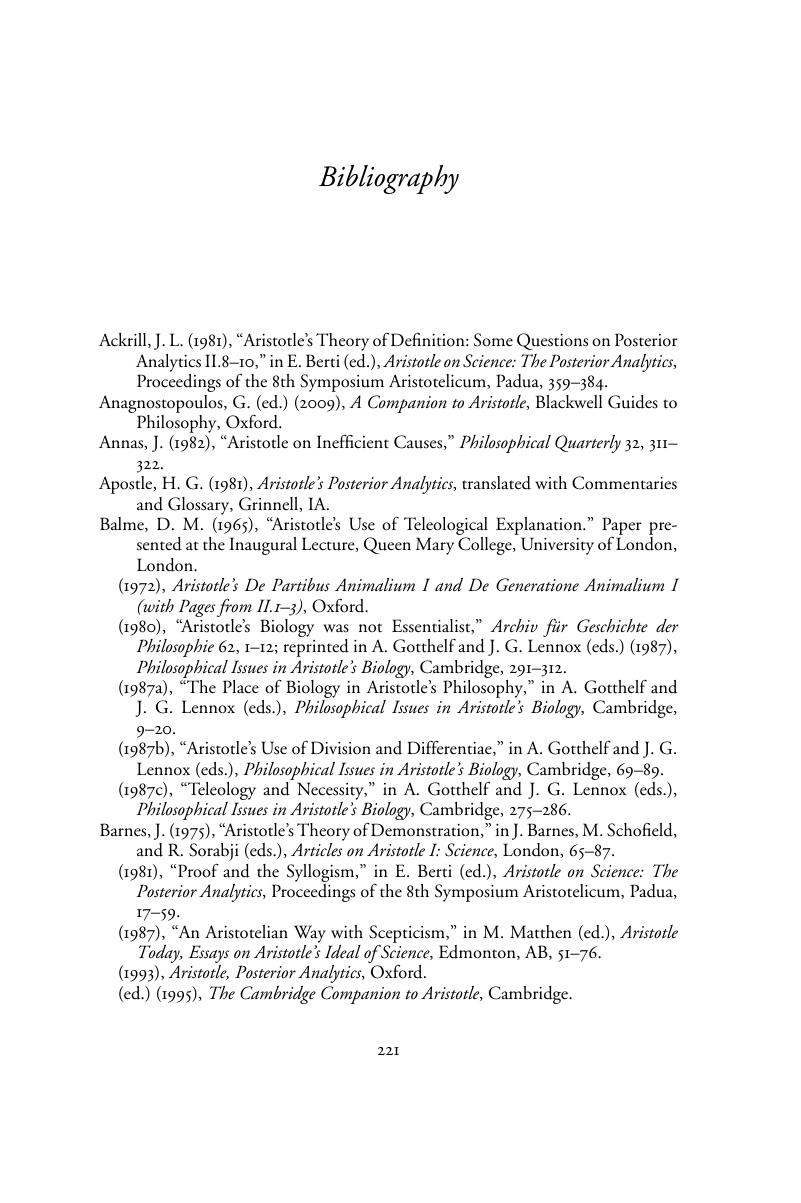Book contents
- Frontmatter
- Contents
- List of figure and tables
- Acknowledgements
- List of abbreviations
- Introduction
- 1 Aristotle's defense of natural teleology: setting the stage for teleological explanations in the Physica
- 2 Aristotle's bio-functional account of the soul: establishing the starting points of teleological explanation in the De Anima
- 3 Introducing biology as a demonstrative science: the theory of teleological explanation in the De Partibus Animalium I
- 4 Explaining parts of animals: the practice of teleological explanation in the De Partibus Animalium II–IV
- 5 Making sense of the heavens: the limits of teleological explanation in the De Caelo
- 6 Aristotle's model of science: formalizing teleological explanations in the Analytica Posteriora
- 7 Conclusion
- Bibliography
- General index
- Index locorum
- References
Bibliography
Published online by Cambridge University Press: 07 September 2010
- Frontmatter
- Contents
- List of figure and tables
- Acknowledgements
- List of abbreviations
- Introduction
- 1 Aristotle's defense of natural teleology: setting the stage for teleological explanations in the Physica
- 2 Aristotle's bio-functional account of the soul: establishing the starting points of teleological explanation in the De Anima
- 3 Introducing biology as a demonstrative science: the theory of teleological explanation in the De Partibus Animalium I
- 4 Explaining parts of animals: the practice of teleological explanation in the De Partibus Animalium II–IV
- 5 Making sense of the heavens: the limits of teleological explanation in the De Caelo
- 6 Aristotle's model of science: formalizing teleological explanations in the Analytica Posteriora
- 7 Conclusion
- Bibliography
- General index
- Index locorum
- References
Summary

- Type
- Chapter
- Information
- Explanation and Teleology in Aristotle's Science of Nature , pp. 221 - 236Publisher: Cambridge University PressPrint publication year: 2010

